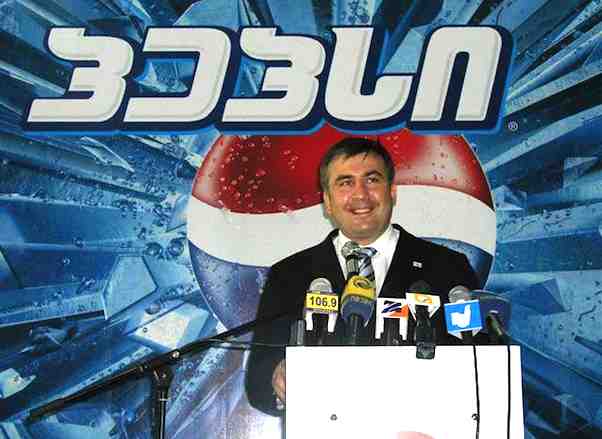
PepsiCo’s generic competitive strategies address market pressure coming from competitors, while the company’s intensive growth strategies respond to an evolving global market for food and beverage products. The company’s generic strategy for competitive advantage matches the intensive strategies to ensure long-term growth in consumer goods business operations. PepsiCo’s vision statement and mission statement establish the main business goals of industry leadership and customer satisfaction, which define the specifications of the company’s generic competitive strategy and intensive growth strategies. PepsiCo’s growth strategies and competitive strategies support business development despite challenges in the international consumer goods industry.
PepsiCo’s competitive strategies account for the market effects of the strategic approaches of major competitors, including The Coca-Cola Company, Keurig Dr Pepper, and Unilever. The competition presents major challenges, noted in the Five Forces analysis of PepsiCo, considering market saturation and the aggressiveness of firms. PepsiCo’s generic competitive strategies enable competitive advantages for the company’s intensive growth strategies to ensure long-term profitability amid the aggressiveness of other multinational consumer goods companies.
PepsiCo’s Generic Competitive Strategy (Porter’s Model)
PepsiCo applies different generic competitive strategies, considering the company’s wide array of products and target markets. Based on Michael E. Porter’s model, these generic strategies maintain competitive advantages in the global consumer goods market. PepsiCo’s generic competitive strategies are as follows:
- Cost leadership
- Broad differentiation
PepsiCo uses cost leadership as its primary generic competitive strategy. This generic strategy focuses on cost minimization as a way to improve the company’s financial performance and overall competitiveness. For example, to compete against Coca-Cola products, PepsiCo offers competitive prices based on low operating costs achieved through this generic competitive strategy. Thus, low costs provide capabilities for the company’s competitive advantages in the global market for snack foods and drinks. High efficiency, cost-effectiveness, and productivity through PepsiCo’s operations management maintain the business organization’s ability to use this generic competitive strategy of cost leadership. A strategic objective for this generic competitive strategy is to automate production processes to minimize the company’s operating costs and allow for the competitive pricing of consumer goods.
PepsiCo uses broad differentiation as its secondary generic competitive strategy. This generic strategy enables business competitive advantages by attracting consumers to some unique features of the company’s products. For example, some variants of PepsiCo products, such as Lay’s potato chips, are marketed as a healthful snack food because of reduced saturated fat content. Thus, a strategic objective for this generic competitive strategy of broad differentiation is to innovate products to address concerns about their effects on consumers’ health. The competitive advantages in the SWOT analysis of PepsiCo shape business capabilities for such innovation for this generic competitive strategy.
PepsiCo’s Intensive Growth Strategies (Ansoff Matrix)
Market Penetration. PepsiCo implements market penetration as its primary intensive growth strategy. This intensive strategy supports business growth through increased sales, such as from a bigger market share. For example, aggressive marketing involving PepsiCo’s marketing mix (4P) attracts more consumers. A strategic objective linked to this intensive growth strategy is to minimize costs and prices to attract more consumers despite market saturation. PepsiCo’s generic competitive strategy of cost leadership supports low-costs and competitive prices for this intensive growth strategy.
Product Development. PepsiCo’s secondary intensive growth strategy is product development. This intensive strategy requires offering new products to capture more consumers. For example, PepsiCo develops products or variants of existing products, such as low-calorie, reduced-salt, or low-saturated-fat variants of snack foods. A strategic objective linked to this intensive growth strategy is to boost R&D investments for product innovation. PepsiCo’s generic competitive strategy of broad differentiation supports this intensive growth strategy by offering unique or novel products that attract more consumers, with consideration for the social trends and other market factors noted in the PESTLE/PESTEL analysis of PepsiCo.
Market Development. PepsiCo applies market development as a supporting intensive growth strategy. This intensive strategy supports business growth by capturing new markets or market segments. For example, PepsiCo continues to expand its distribution network to reach the last remaining markets or segments, especially in developing regions. However, market development is only a supporting intensive growth strategy because the company already has a significant presence in all regional consumer goods markets around the world. A strategic objective for this intensive strategy is to expand PepsiCo’s supply chain to support the growth of the business and its distribution network. The generic competitive strategy of cost leadership enables PepsiCo to effectively use this intensive growth strategy through cost minimization despite additional investments used for expansion to new markets or market segments.
References
- Kathuria, R., & Lucianetti, L. (2024). Aligning performance metrics with business strategy. Management Decision, 62(5), 1539-1559.
- PepsiCo, Inc. – Form 10-K.
- PepsiCo Away From Home debuts mixology offering, DRIPS By Pepsi featuring flavor-packed crafted beverages.
- PepsiCo Positive.
- Schroedel, S. (2024). Best business models for the fast-moving consumer goods sector: Patterns for innovation. Sustainability, 16(9), 3787.
- Thi Thoan, L., Thuy, V. T. N., & Long, T. T. (2024). Does market competition make a difference in business strategy for listed companies? Cogent Business & Management, 11(1), 2312591.